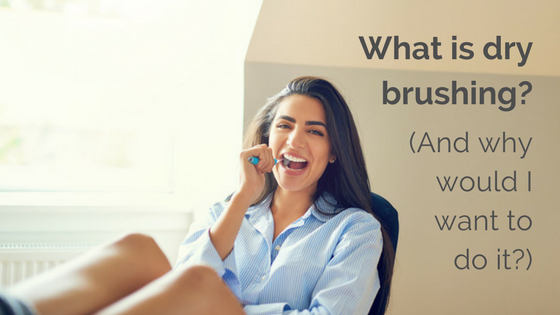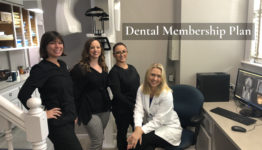
Humans were fashioning toothbrushes from twigs, preferably aromatic ones, as far back as 3500 BC. Sometimes they added crushed abrasives – salt, eggshells, bones – but toothpaste as we know it, creamy, flavored and in a tube – first sold by Colgate – didn’t appear until the late 1800’s.
Today we associate the minty, or sometimes spicy, taste of toothpaste with cleanliness of our mouth and teeth. But that may be a false sense of security. Our mouth will taste and feel fresh after brushing with a flavorful substance – but that doesn’t always mean it is clean.
“Dry” brushing, as unappealing as it may sound, is a more reliable method of cleaning your teeth and gums. We join many dentists in recommending our patients add dry brushing to their oral hygiene routine. Dry brushing will ensure optimal oral health.
What is dry brushing?
Simply, it’s cleaning your teeth with only your toothbrush – no water, no paste. Studies have shown dry brushing can significantly reduce plaque and bleeding of the gums.
What are the advantages of dry brushing?
- Dry brushing is especially effective at cleaning the inner surfaces of the bottom front teeth, which are particularly susceptible to plaque buildup.
- You can brush anywhere – watching TV, reading a book. You don’t need to stand at a sink because you’re not going to rinse or spit out anything.
- You can brush longer. This is important because it takes eight to 10 minutes of brushing to dislodge the plaque and get your teeth as clean as they need to be to prevent cavities and gum disease. The brushing must be done all at one time to be effective.
- Without a mouthful of foam, you may reach areas of the mouth you miss with regular brushing.
What about the advantages of toothpaste, like fluoride?
You can continue to use toothpaste and water after you dry brush. It is important to dry brush first because the fluoride ions and whitening properties in toothpaste will not penetrate the film caused by plaque. Only after the plaque is mechanically removed will the fluoride reach the tooth surface.
What about electric toothbrushes?
Dry brushing with an electric toothbrush is effective and may achieve the same results. You still need to brush the same amount of time.
What dry brushing tips should I be aware of?
- Use a brush with soft bristles to protect your tooth surfaces and gum tissue.
- Hold your toothbrush at a 45-degree angle.
- Replace your toothbrush at least every three months, more often if needed.
- You can also scrub your tongue.
- Dry brush for 8 to 10 minutes at least once every day. It takes about 24 hours for a new layer of plaque to form on your teeth.
- Ideally, you should brush after every meal, but if you can’t, rinsing your mouth with plain water will help reduce the plaque bacteria.
Our office urges you to try dry brushing and experience the feeling of ultra-clean teeth. In the long run, you’re sure to have better dental checkups, too. With dry brushing, your mouth will feel clean only when it really is clean.



